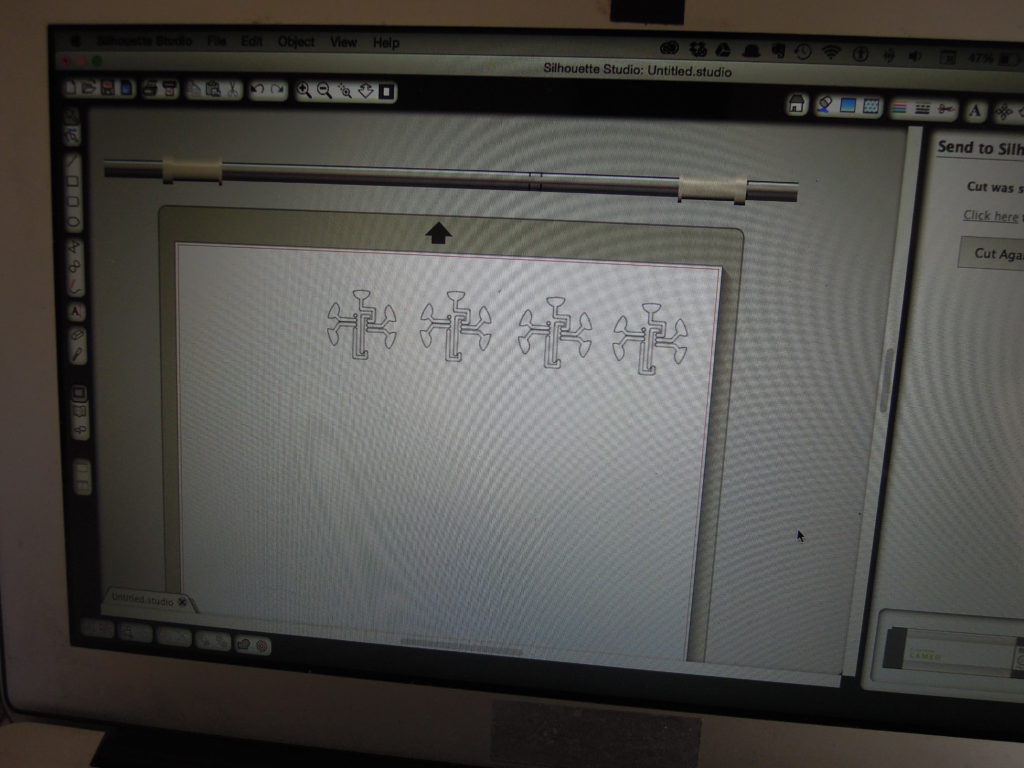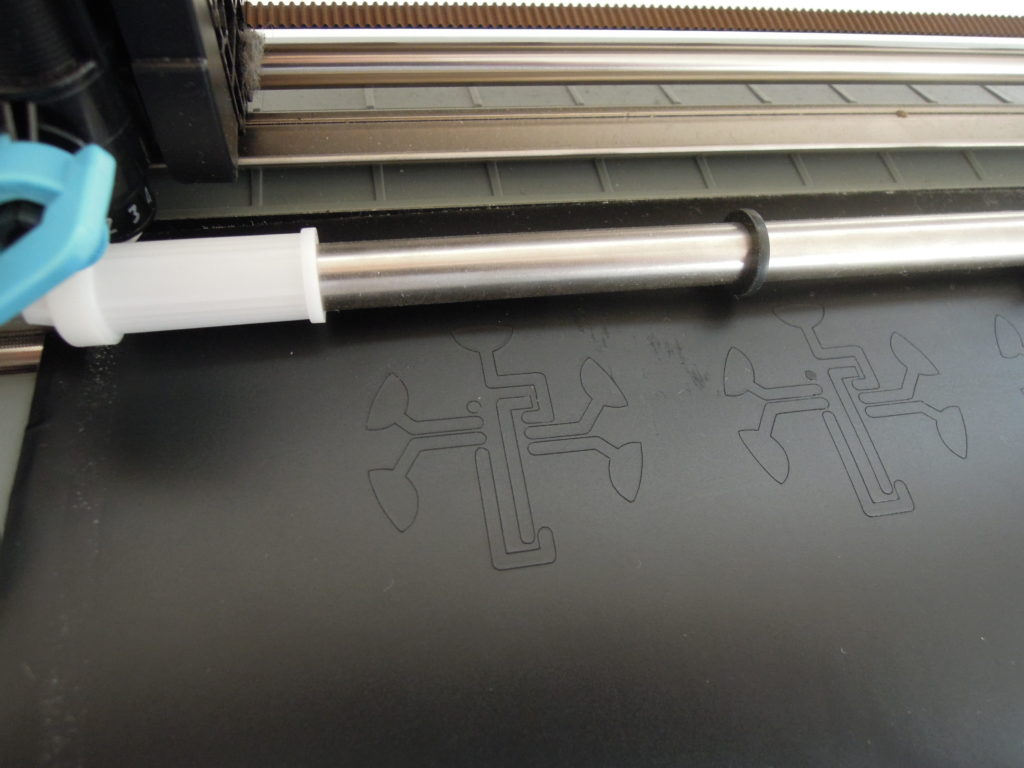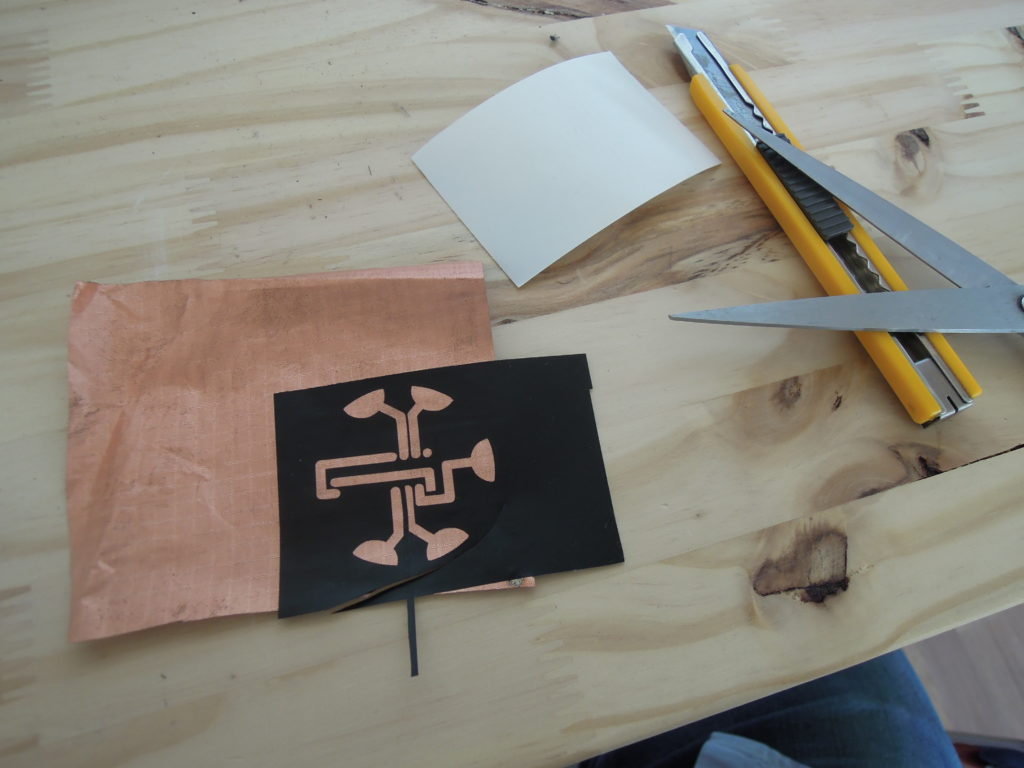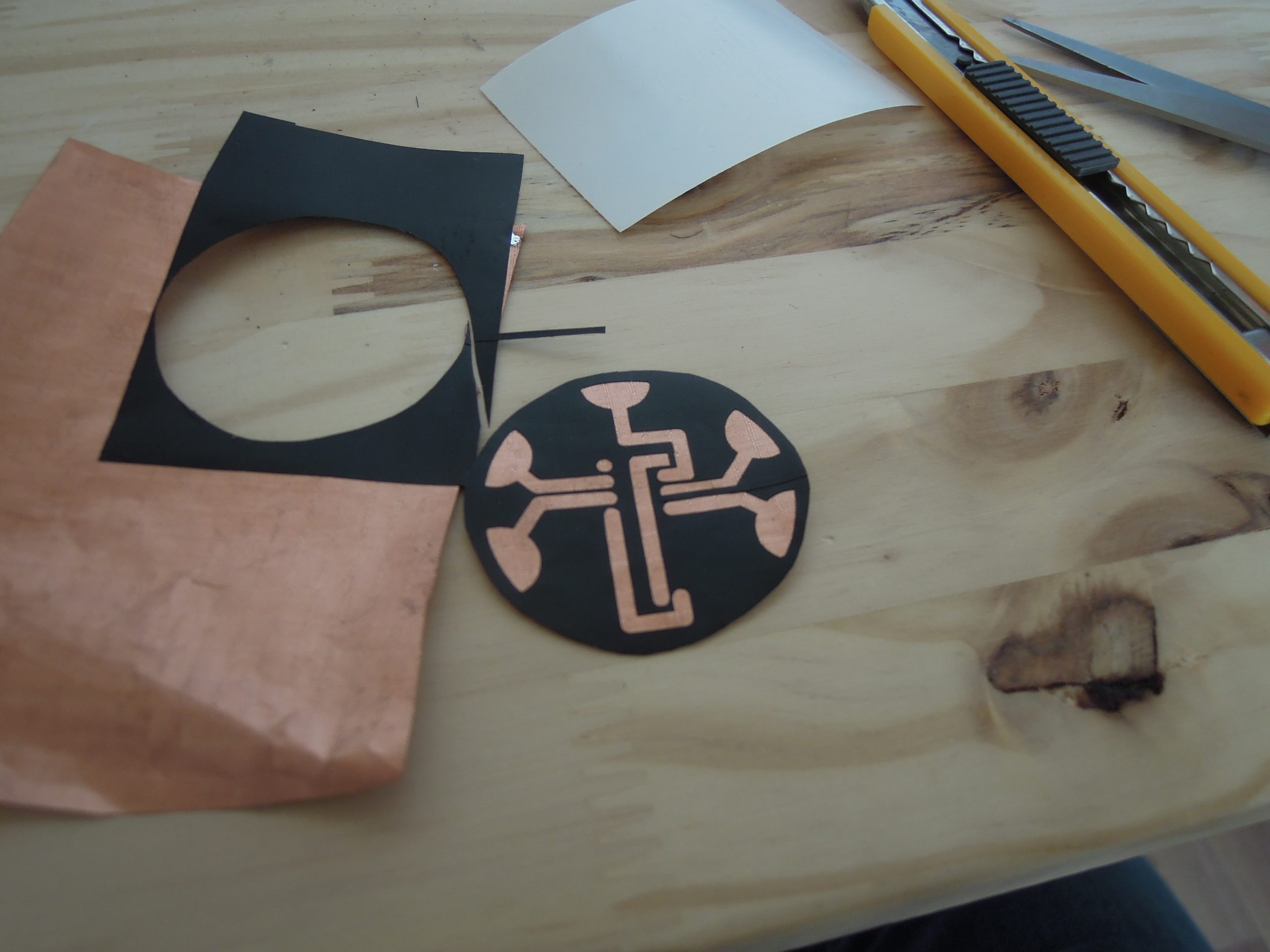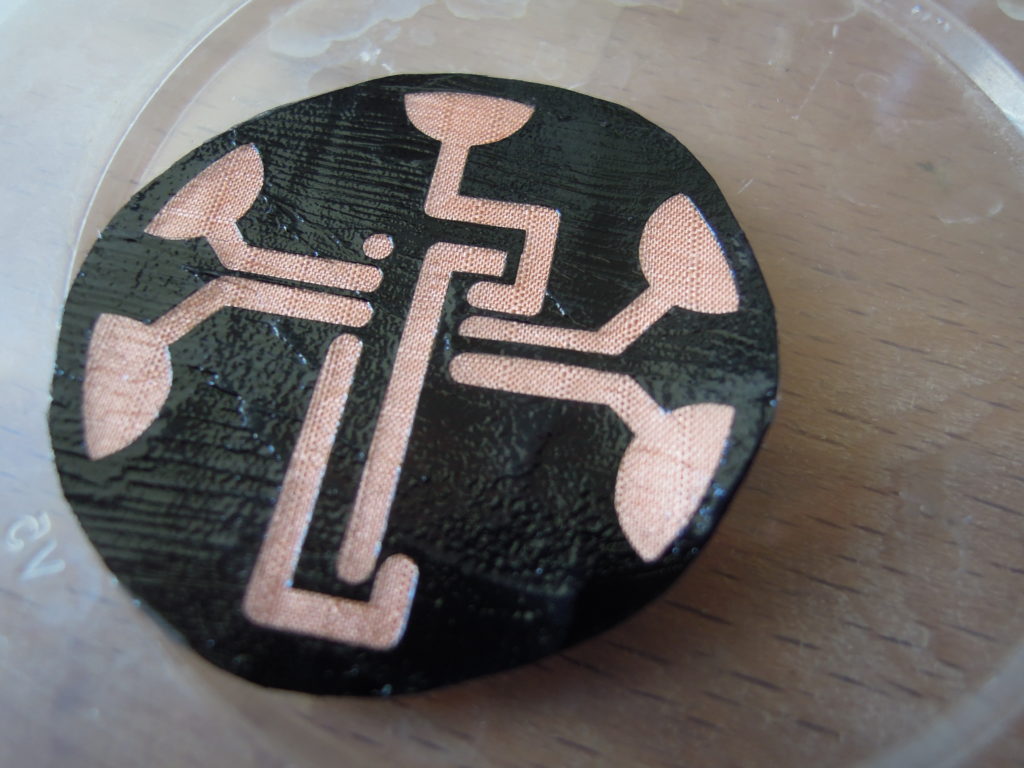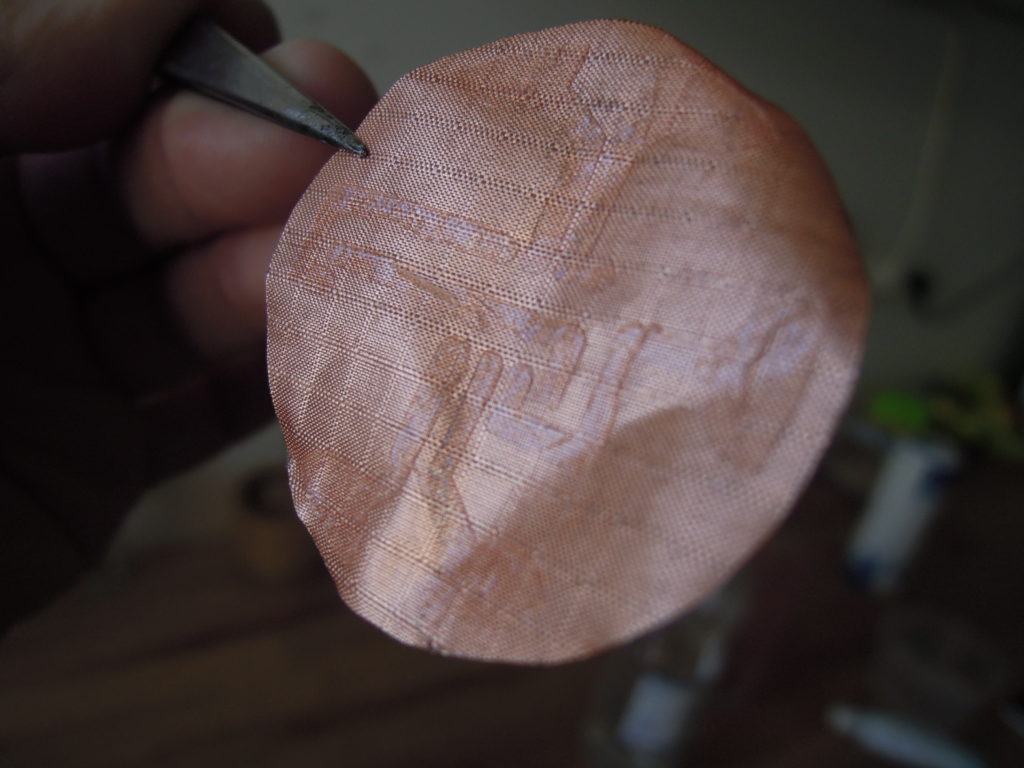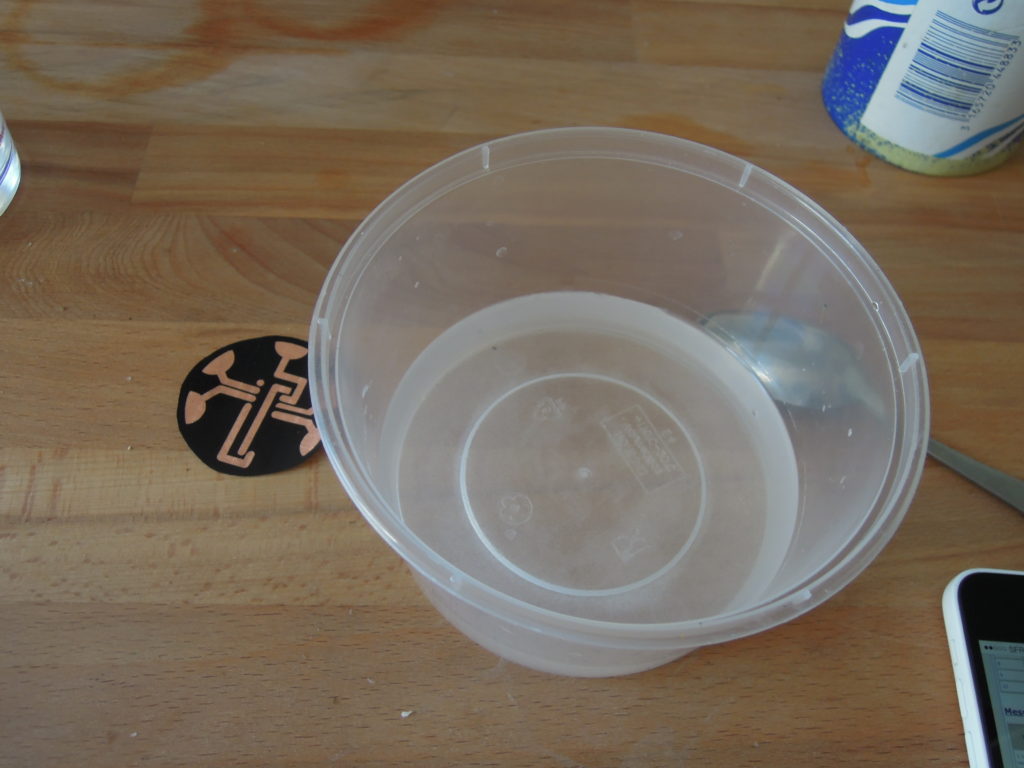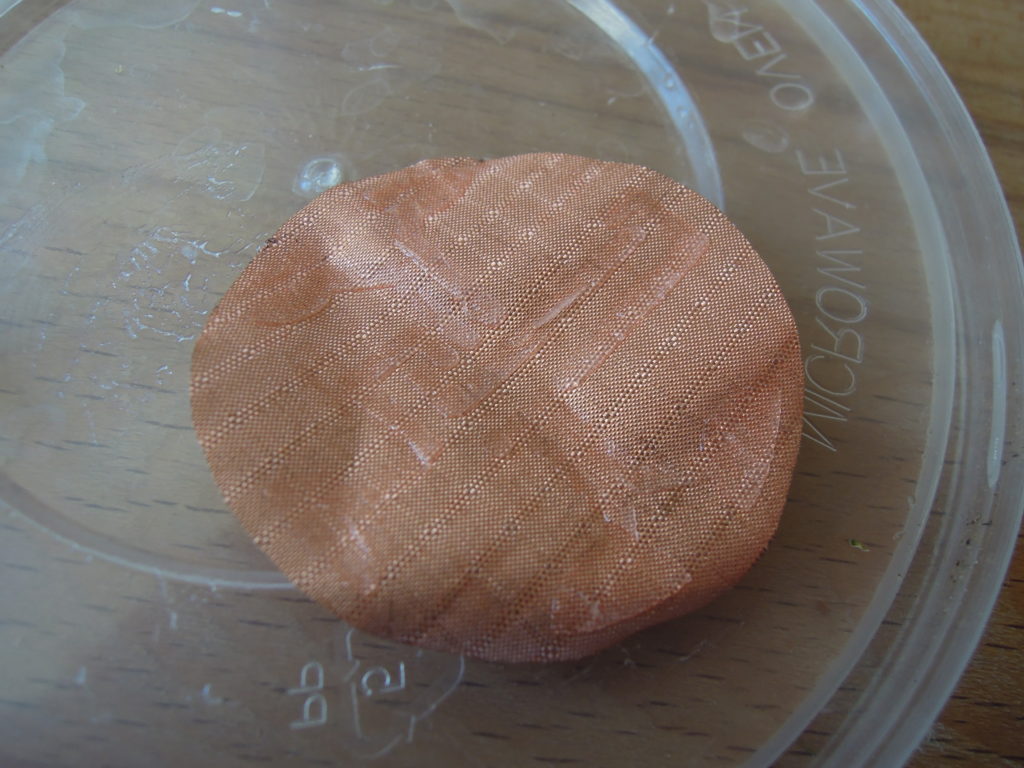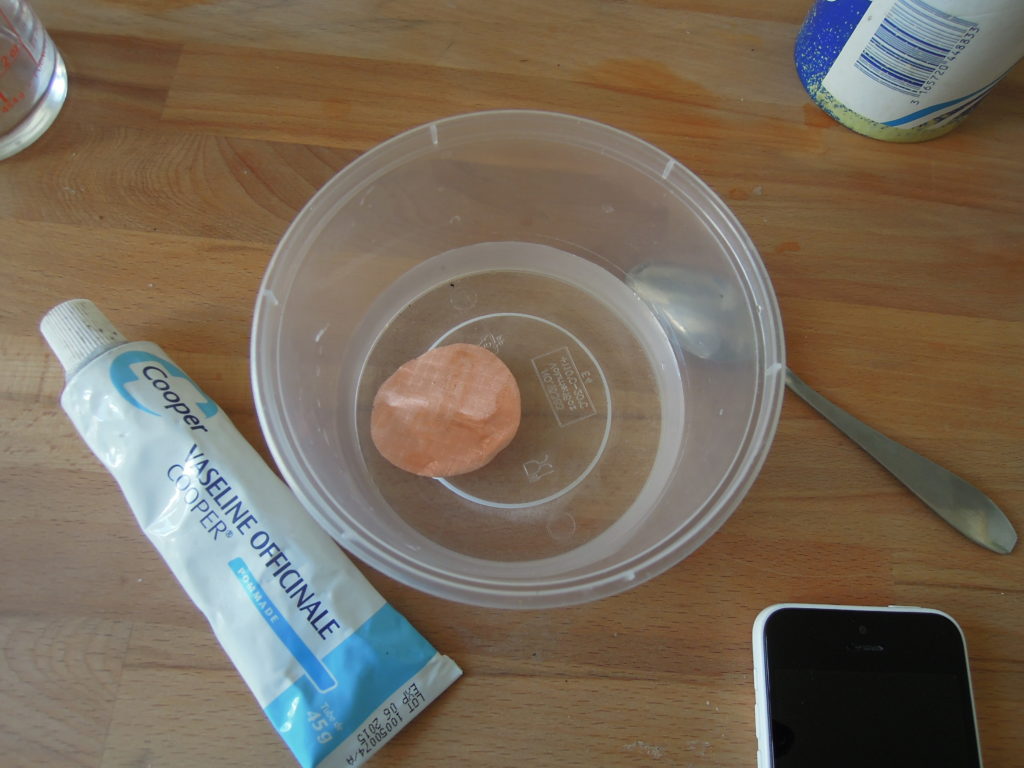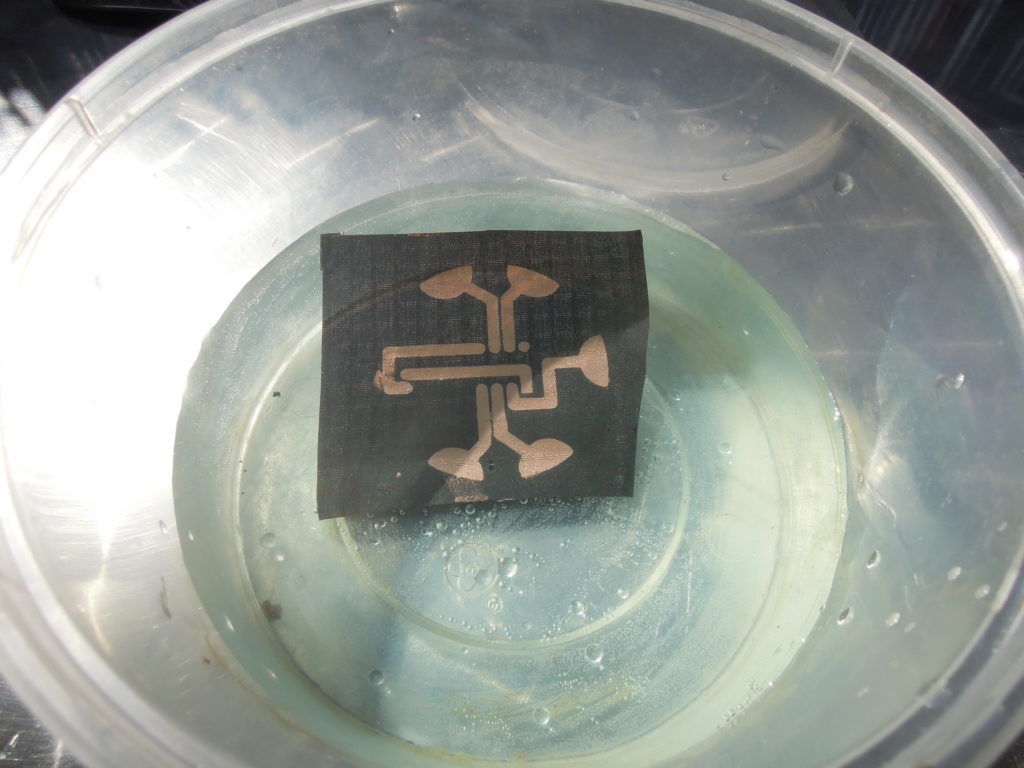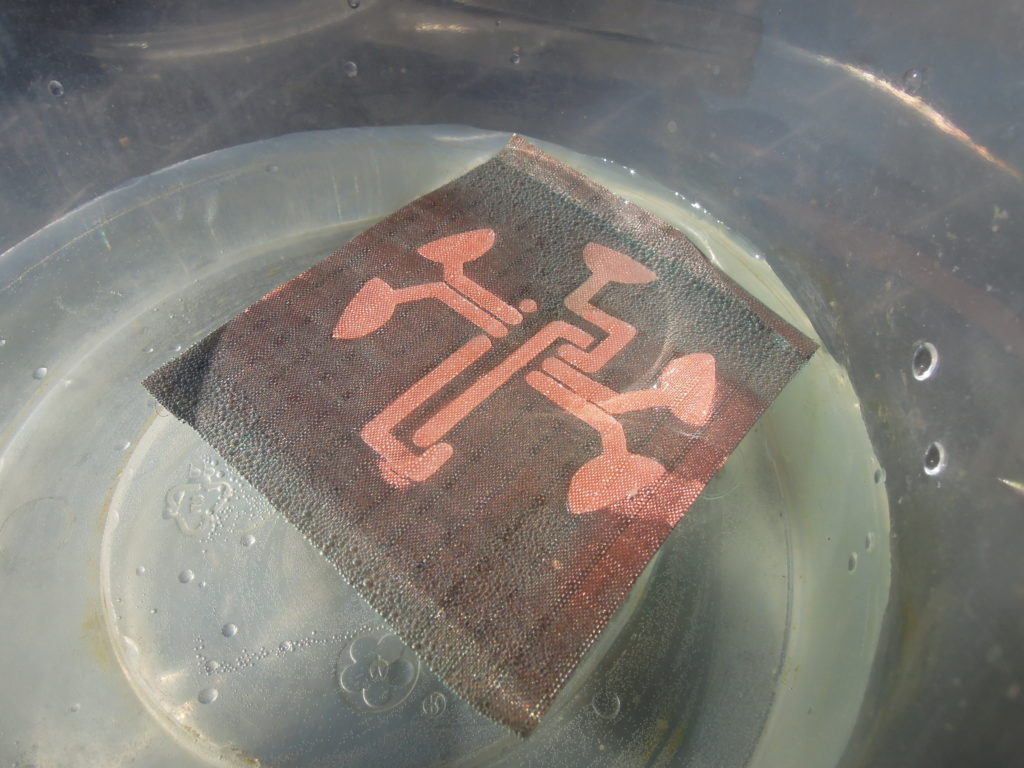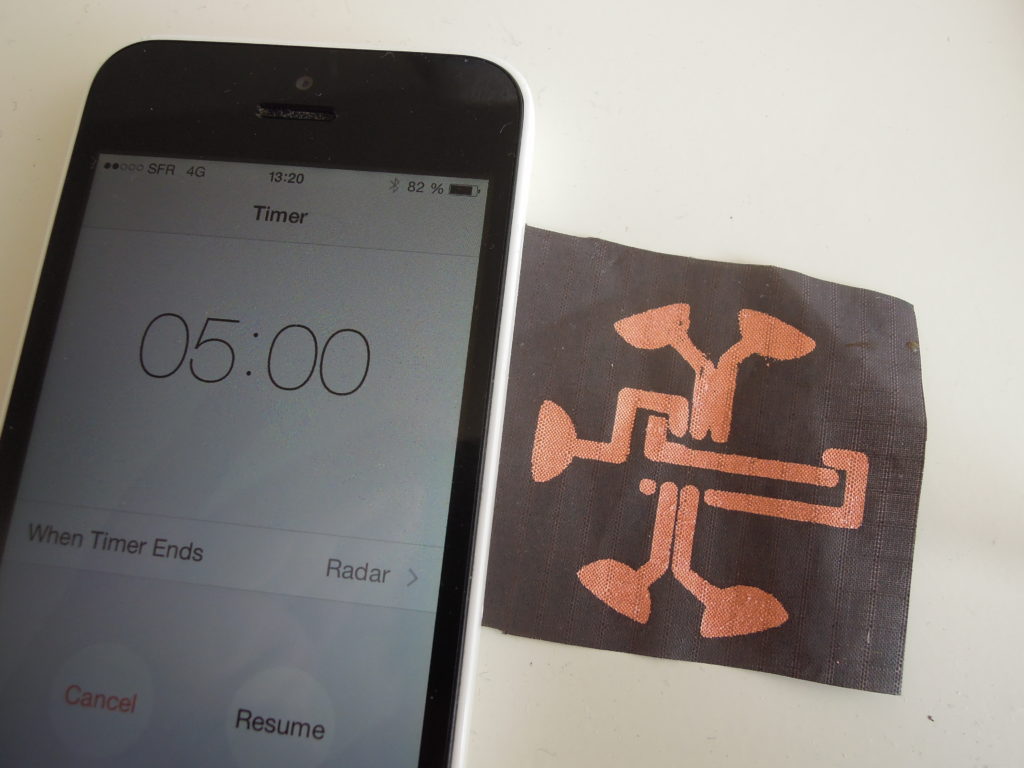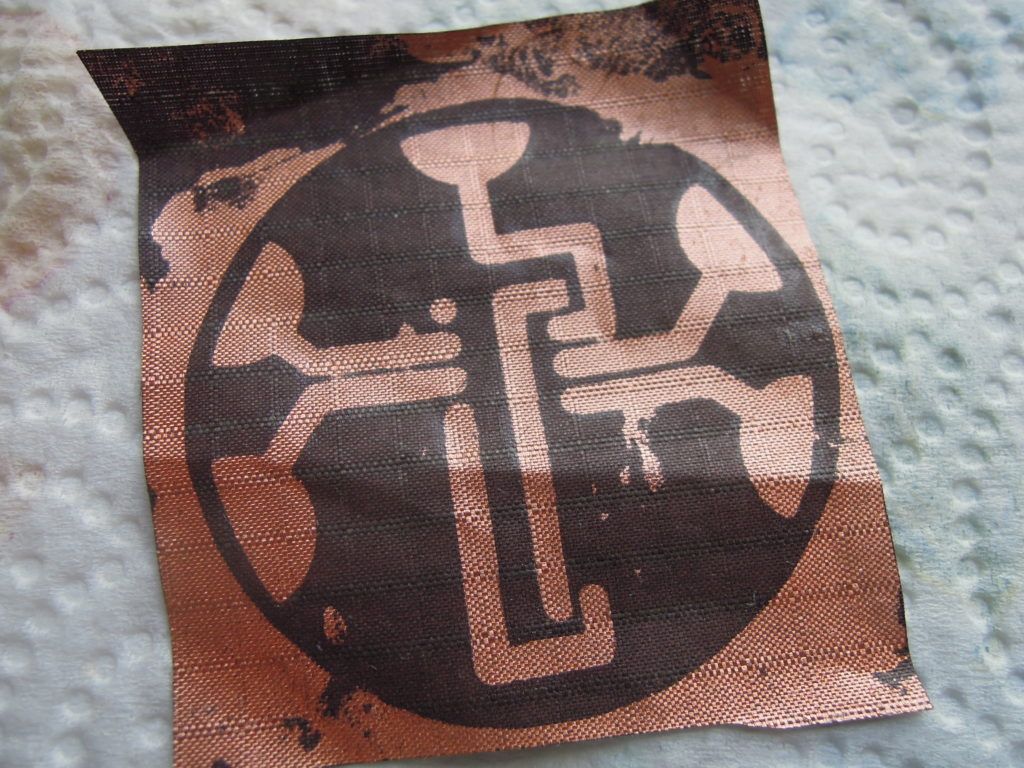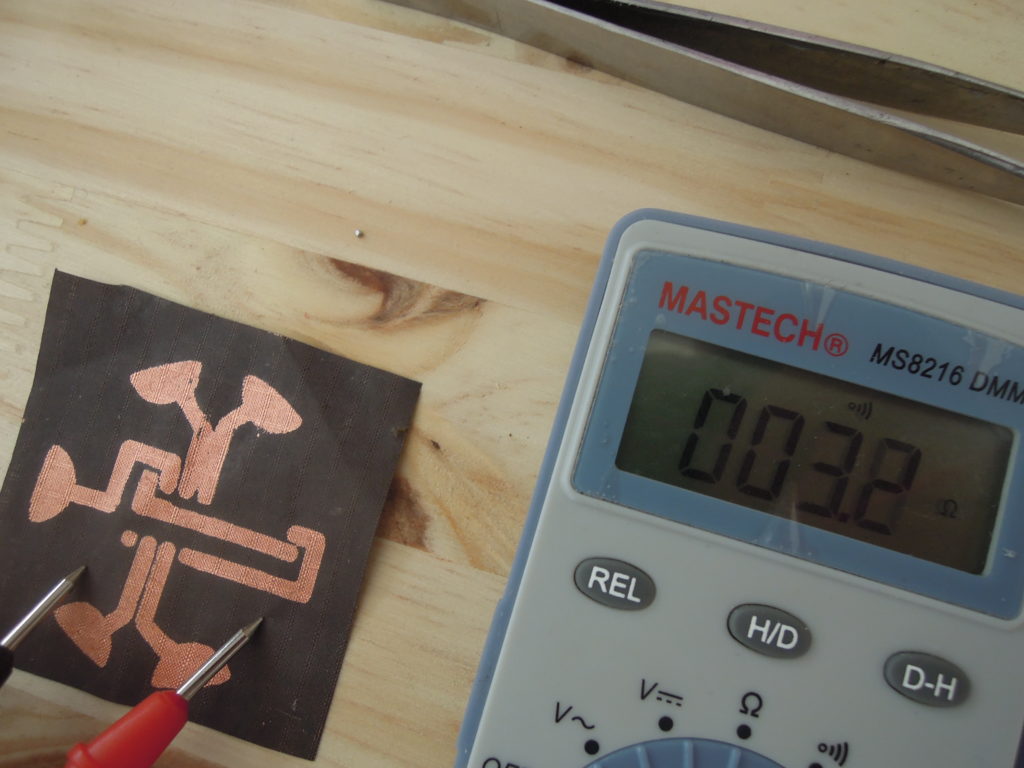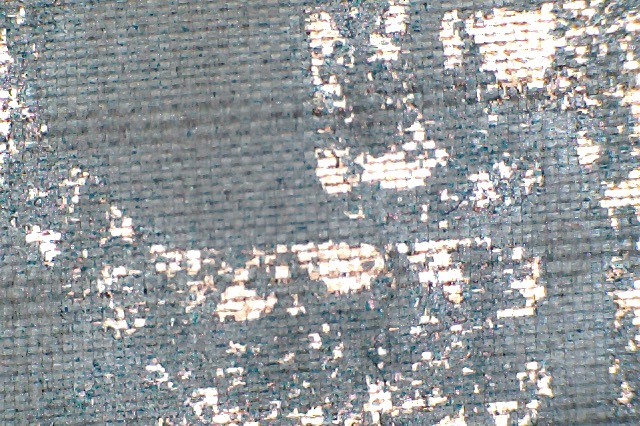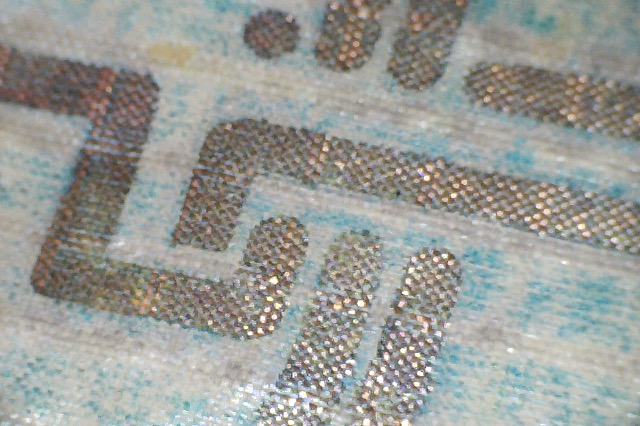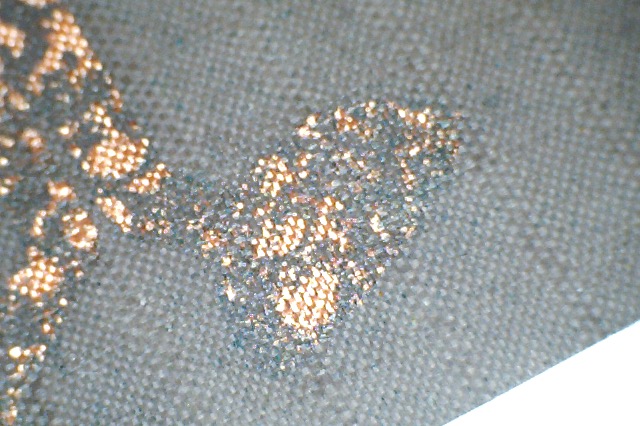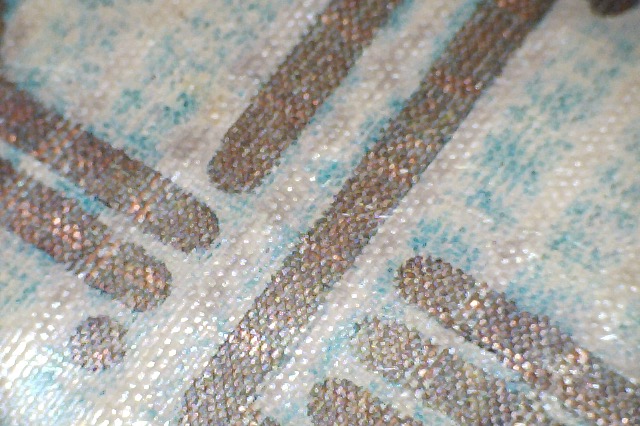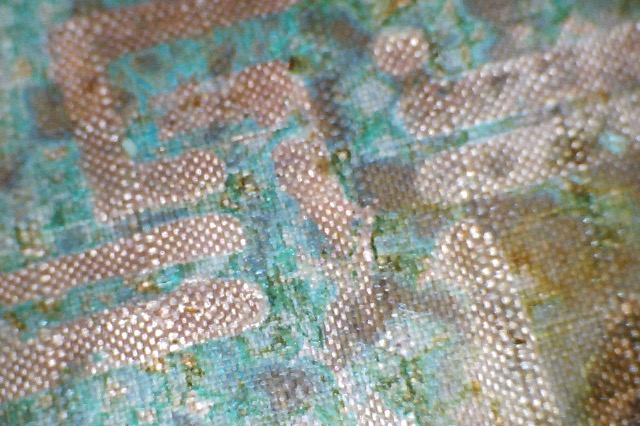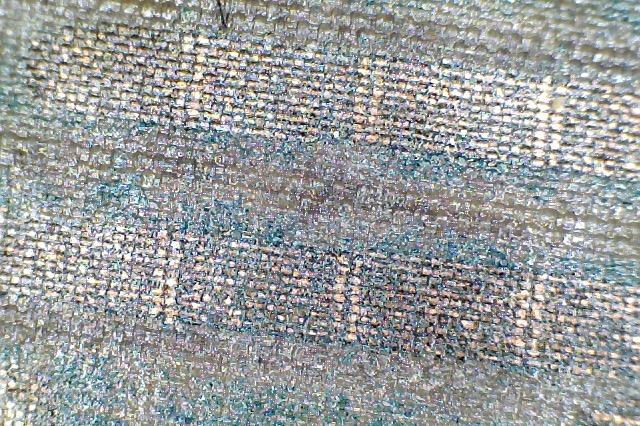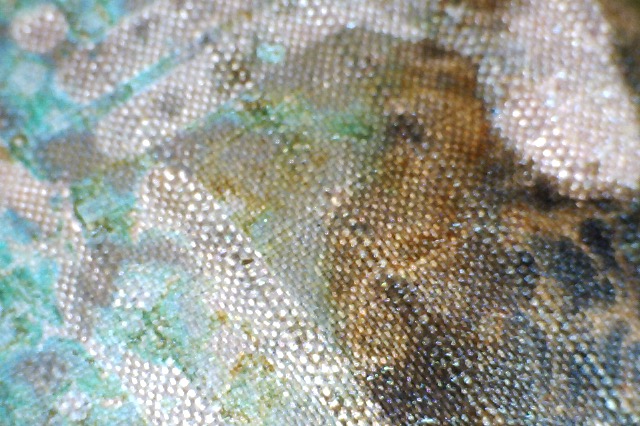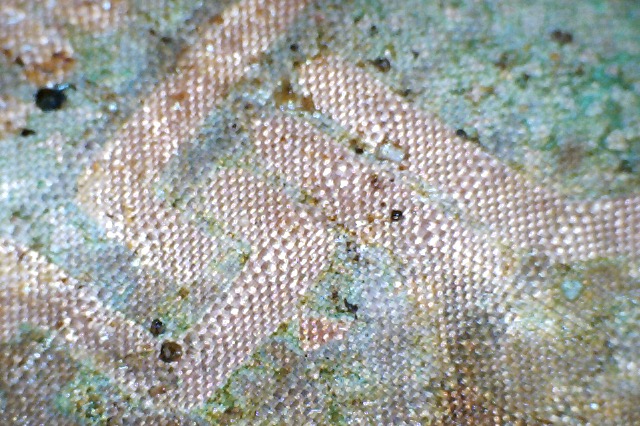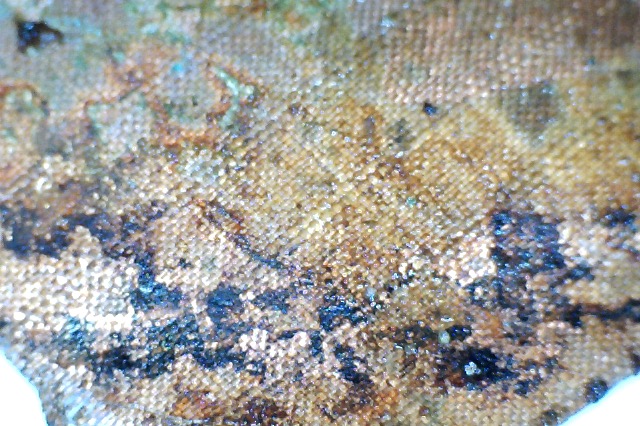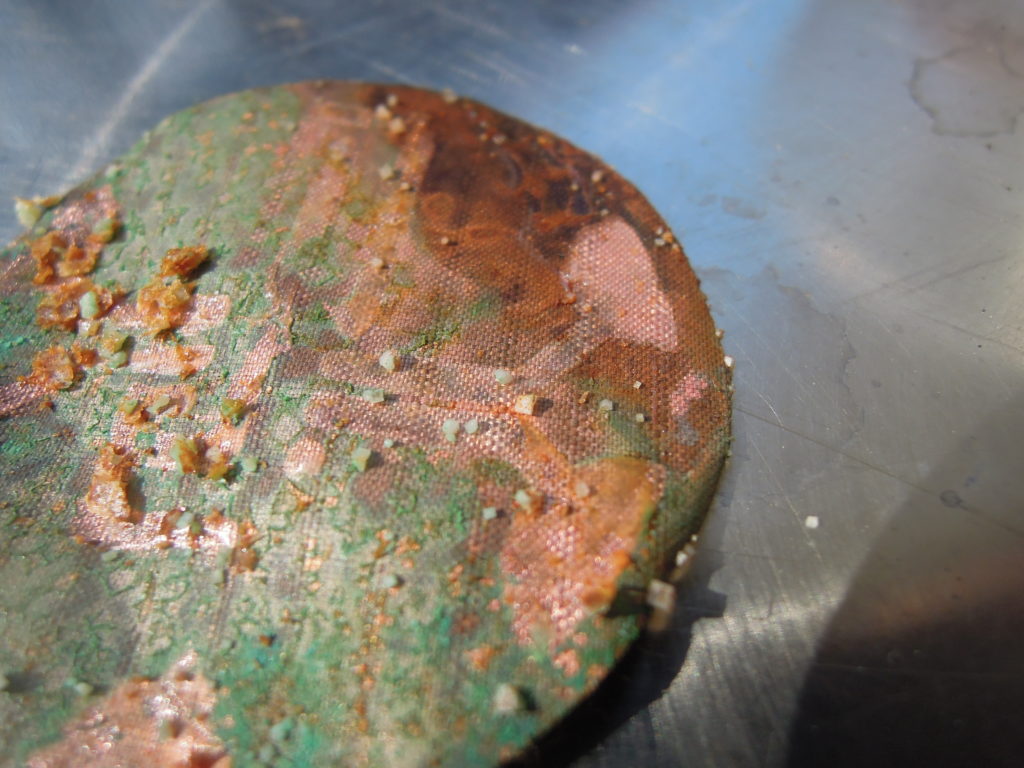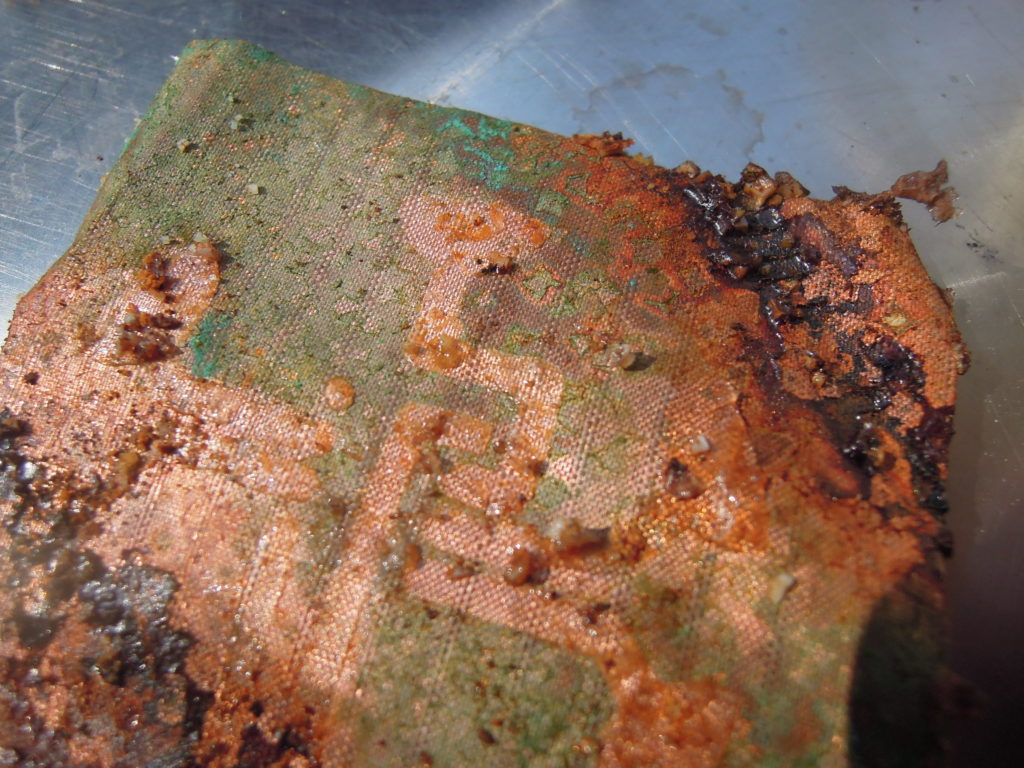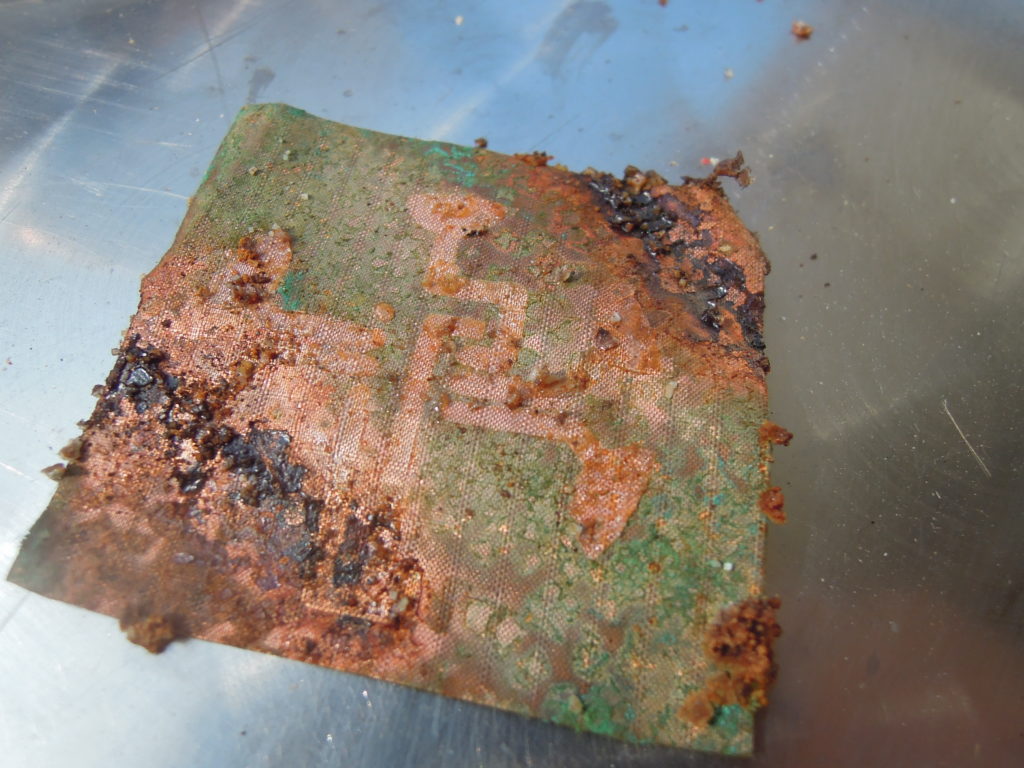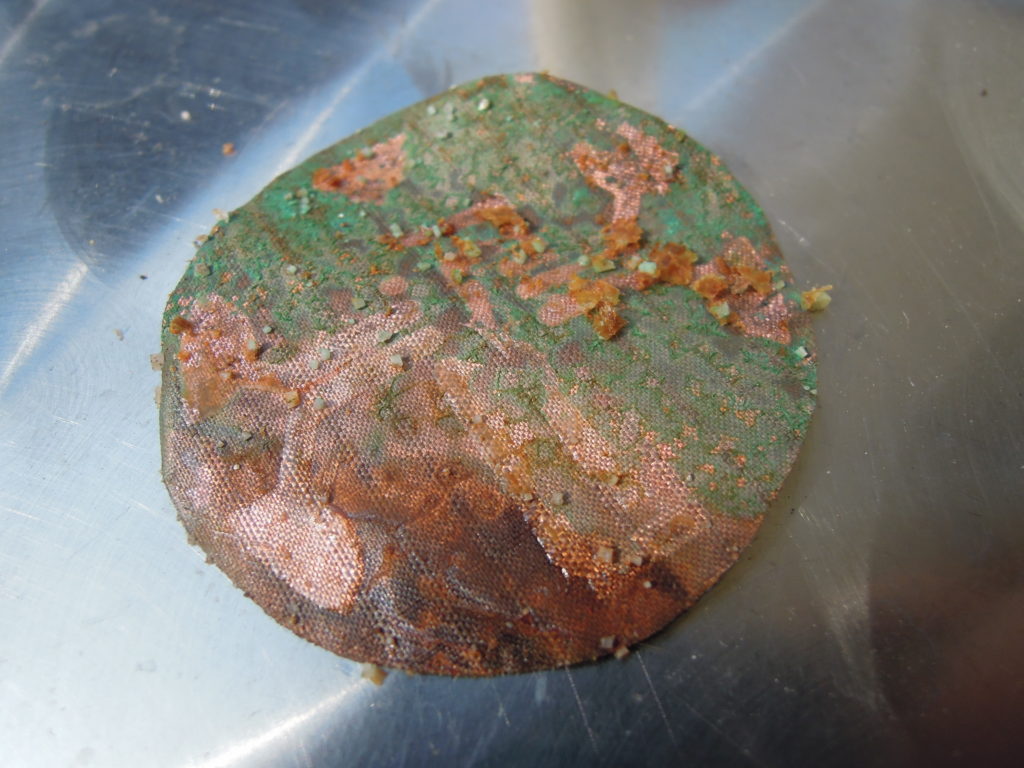Author(s): Martin De Bie
The purpose of this experimentation is to etch a pcb by using a mix of vinegar, salt and hydrogen peroxide.
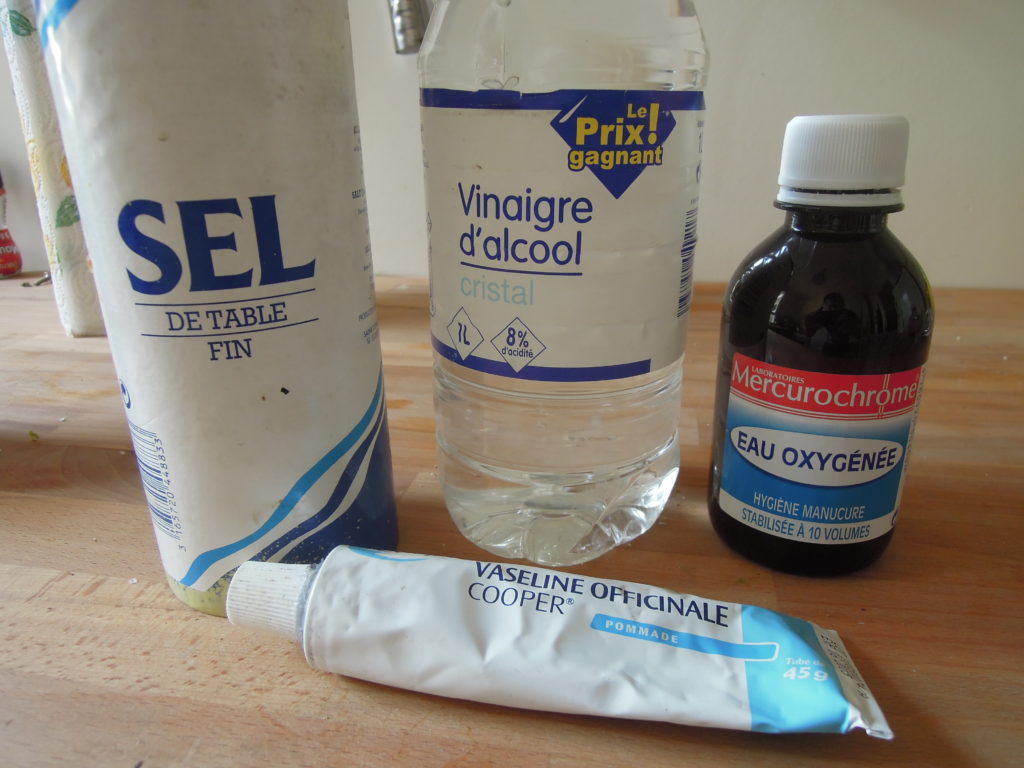
The material use for the experimentation will be :
– flectron textile http://www.lessemf.com/1212.pdf
– regular salt
– vaseline
– vinegar
– hydrogen peroxide
– regular vinyle
– a plotter like cameo silhouette (the stencil can easily be cut by hand)
1 – First thing is to draw a circuit in a vector software like inkscape, in this case i draw an extension for an attiny. After i use a plotter to cut a stencil of the circuit in regular vinyle.
2 – Stick the stencil on a piece of flectron.
3 – Apply some vaseline on the flectron part. This gravy paste will avoid the part to be etch in vinegar mix. You can put the piece in the freezer to solidify vaseline before taking of vinyle part.
4 – After having prepare the mix of vinegar ( 60% vinegar, 40% hydrogen peroxide and a spoon of salt), dive the piece of flectron inside. There are not a precise timing for etch, more and more you will use the mix faster it will be to etch. You can start the chemical process by putting a coin during 2h before starting the etch process.
Final circuit place on a piece of neoprene.
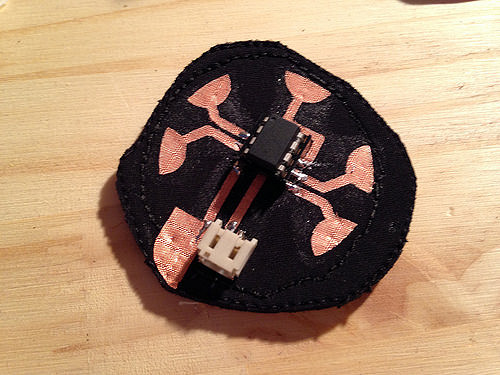
Some details taking with USB microscope.
And some fails (i forget the fabric one night inside the mix.) 🙂
